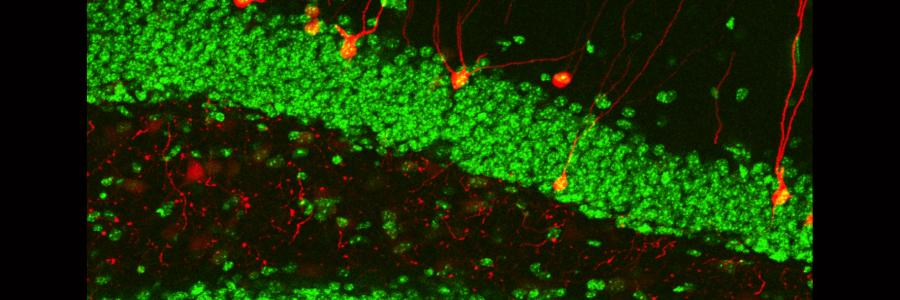Learning and Memory

“Memory is the diary we all carry about with us” (Oscar Wilde), and makes us who we are. What would be left of ourselves without the recollections of our childhood, the things we’ve learned in college or the thought of yesterday’s dinner with good friends? Without memory we no longer exist – except in the memory of others. For humans, memory is a vital social skill, and the very basis of cultural development.
Brain science therefore always had a keen interest in understanding memory. Breakthrough investigations have given us the hope that memory may be one of the first mysteries of the brain that we can solve. We understand that synaptic plasticity induces changes in the connections between neurons, changes that in turn enable the storage of information. But how do we bridge the gap between this theoretical idea and understanding memory as we know it, in all its facets and complexity? How can a changing synapse contribute to the storage of a single event? How are memories retrieved? Why are there such huge differences in the capacity of memory between people? And why and how are memories lost, both in normal life as well as in disease?
Our grants supporting collaborative efforts into specific topics of this fascinating field of research.
• Within the context of the Amsterdam Brain and Mind project (ABMP), two projects were funded to stimulate VU-UvA collaborative research in the area of ‘emotion, stress and affective regulation’, as well as of ‘brain mechanisms in health & disease’. The groups of Sabine Spijker and Merel Kindt (Psychology, UvA) focus on Dissection of prediction error and reconsolidation circuits of aversive-emotional memory. The aim is to causally identify the brain region(s) generating aversive PE-signals to neurons of the memory trace and elucidate the mediating mechanisms of propranolol disruption of reconsolidation after PE.
• The groups of Guus Smit & Michel van den Oever and Carien Lansink (SILS, UvA) focus on Disambiguating similar experiences: influence of the perirhinal cortex on hippocampal pattern separation.
• Sabine Spijker received a TOP grant together with Guus Smit, Michel van den Oever, Priyanka Rao-Ruiz and Steven Kushner (Erasmus MC, Rotterdam) entitled Molecular and cellular dissection of memory-encoding neuronal ensembles. We know that learning activates a subset of neurons in the brain, but now, using the newest techniques of gene and protein expression analyses and specific interventions in these activated neurons only, we aim to peek into the code of how memories are stored in the brain. This might lead to the identification of novel molecular targets for therapeutic intervention to treat memory deficits.